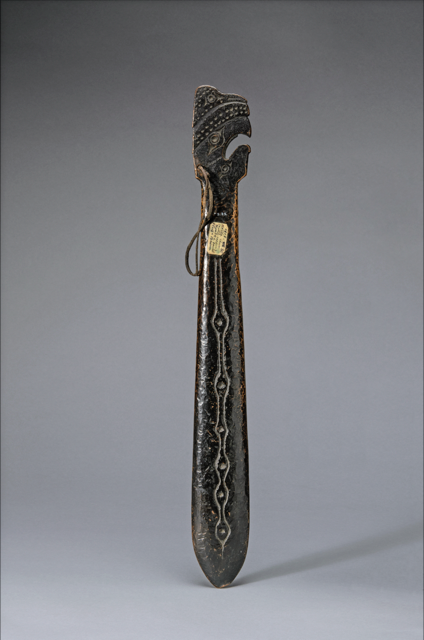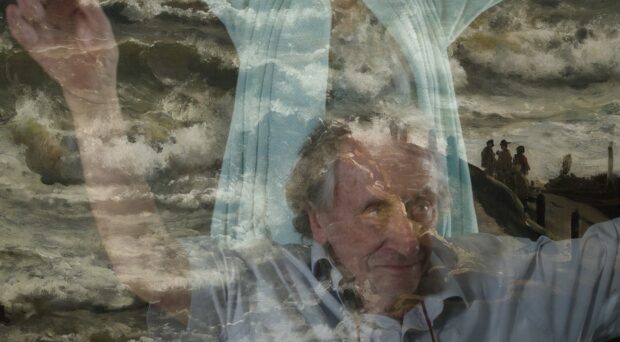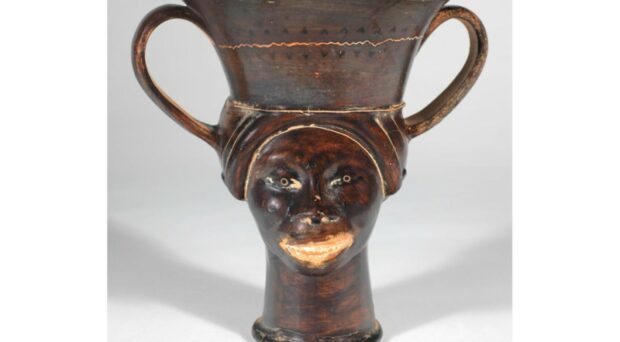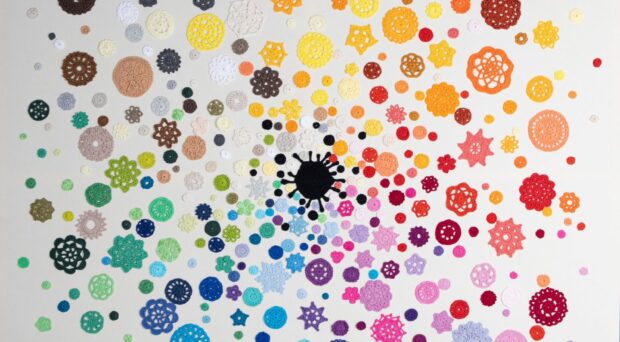Fourteen objects held at the Museum of Archaeology and Anthropology and originating from the First Nations people of the Northwest Coast of North America were analysed as part of a PhD research project by Lenore Thompson.
Using a handheld XRF machine (also known as an XRF gun) she determined the elemental composition of pieces of copper used in several types of object collected between 18th-20th centuries. The results allow us to draw conclusions about the use of native, traded and salvaged copper sources.
What is XRF?
XRF stands for X-ray fluorescence, and is one of several scientific techniques used to find out which elements make up a material. It is ideal for use with museum collections due to it being non-destructive. This means we don’t need to cut or remove any samples from the object, and the technique itself causes no damage. Since the XRF gun is portable it also reduces the risk of damaging objects during transit.
How does it work?
In simple terms, the technique works by firing an X-ray at the surface of the object. Energy from the X-ray beam interacts with the structure of the atoms and causes them to emit unique bursts of energy. On a graph, the unique energy signature emitted from each element can be identified and quantified in relative terms. This is expressed as a percentage by weight.
Why measure elemental composition?
On the Northwest Coast, traditional metalworking techniques made use of ‘native’ or naturally occurring copper, but did not use furnaces to extract metal from ores (smelting) or make alloys. Native copper may contain a few specific trace elements, such as iron, vanadium, antimony and silver, but does not contain elements such as zinc, lead, arsenic, tin or nickel. The presence of these additional elements indicates that the copper has undergone some kind of smelting or alloying process and therefore that it has been introduced to the area through Eurasian contact and trade.
Why copper?
Copper was a highly valued substance on the Northwest Coast, associated with status, wealth and even health. Shield-shaped ‘coppers’ were the most precious objects, competitively exchanged or ritually destroyed by chiefs at potlatches, but copper was also used in composite objects. While the coppers at MAA were analysed by Thompson, I have not included the results here in favour of giving an overview of the variety of objects analysed.
What were the results?

This Tsimshian mask is part of the founding collection of the museum and was collected in 1862 by ornithologist James Hepburn (1811- 1869). The eyes rotate, appearing either open or shut, and there are 38 individual pieces of metal attached to the face.
All of the copper pieces that were analysed include trace elements not found in native copper and they must therefore all have come from trade or salvage. Thompson classified some of the pieces as ‘Copper Metal’, with less than 1% by weight of additional elements. Others are ‘Arsenic Bronze’, which includes 3-4% by weight of arsenic. This suggests that there were at least two distinct original sources of metal, which were then cut into the shapes required by the maker(s) of the mask.

This copper hand club was collected in the late 19th or early 20th Century from Nootka Sound, Vancouver Island, which is the traditional territory of the Nuu-chah-nulth people. More commonly carved from whalebone, these clubs were carried by chiefs as a weapon and badge of office.
The metal was classified as ‘Low Zinc Copper’ – a type of brass with less than 5% zinc. The addition of small amounts of zinc makes the alloy more easily workable and improves corrosion resistance. Brass alloys do not originate from Northwest Coast communities, as they require the use of a furnace to alloy the metals together and this was not a technique practiced locally.

This necklace is made from 17 tubular copper beads strung with shell disc beads on a length of twined wool. This is the oldest piece that was analysed, collected between 1791 and 1795 by Midshipman (later Admiral) Spelman Swaine (1769-1848) while on a surveying voyage to British Columbia led by George Vancouver.
Thompson’s analysis revealed that eight of the beads are ‘Arsenic Bronze’ and the other nine are ‘Copper Metal’. Only two of the copper metal beads have a composition that could be from native metal, one with 100% copper and the other with 99.93 % copper mixed with 0.07% iron. Out of 67 samples analysed at MAA, these two small beads are the only ones likely to be made from native copper.
What happens now?
Museums record information about objects on a database and we continue to update it as we learn new things. This is a bit like a puzzle – the basic information that we have, such as size, weight, materials, collector and place of production form the outer edges. This might be all we know about an object. When research is carried out and we learn more, we begin to build a much more detailed image of what we have and, ultimately, what it all means.
Thanks to the PhD research carried out by Lenore Thompson, we can speak about these objects and their creation with more confidence. We know that two of the beads in the necklace are probably made from native metal. That this was mixed with non-native metal in the same necklace seems to indicate that it was the material type, not its source, which was important to the person making or wearing the piece. Thompson has suggested that the use of different types of copper may indicate that they were selected for visual contrast, or that it may indicate replacement and repair over time. In either case, it is clear that First Nations people had access to imported copper from at least the 18th Century through trade routes or networks and that they were willing to incorporate it into a wide variety of culturally significant objects including those marking wealth and status.
Reference: Thompson, Lenore, 2019. Copper on the Northwest Coast: A Material Investigation of Cultural Entanglements During the Fur Trade and Colonial Periods; unpublished PhD thesis, University of Sheffield.
MAA is a member of the Reciprocal Research Network (RRN), based at the Museum of Anthropology (MOA) in Vancouver and developed in partnership with First Nations groups from the Northwest Coast of British Columbia. The RRN brings together information and images of Northwest Coast collections in various museums to facilitate access to Northwest Coast artists and communities. This new information about MAA’s collection will also be shared via the RRN.
To find out more about the collection at MAA, please visit our online collections database.







